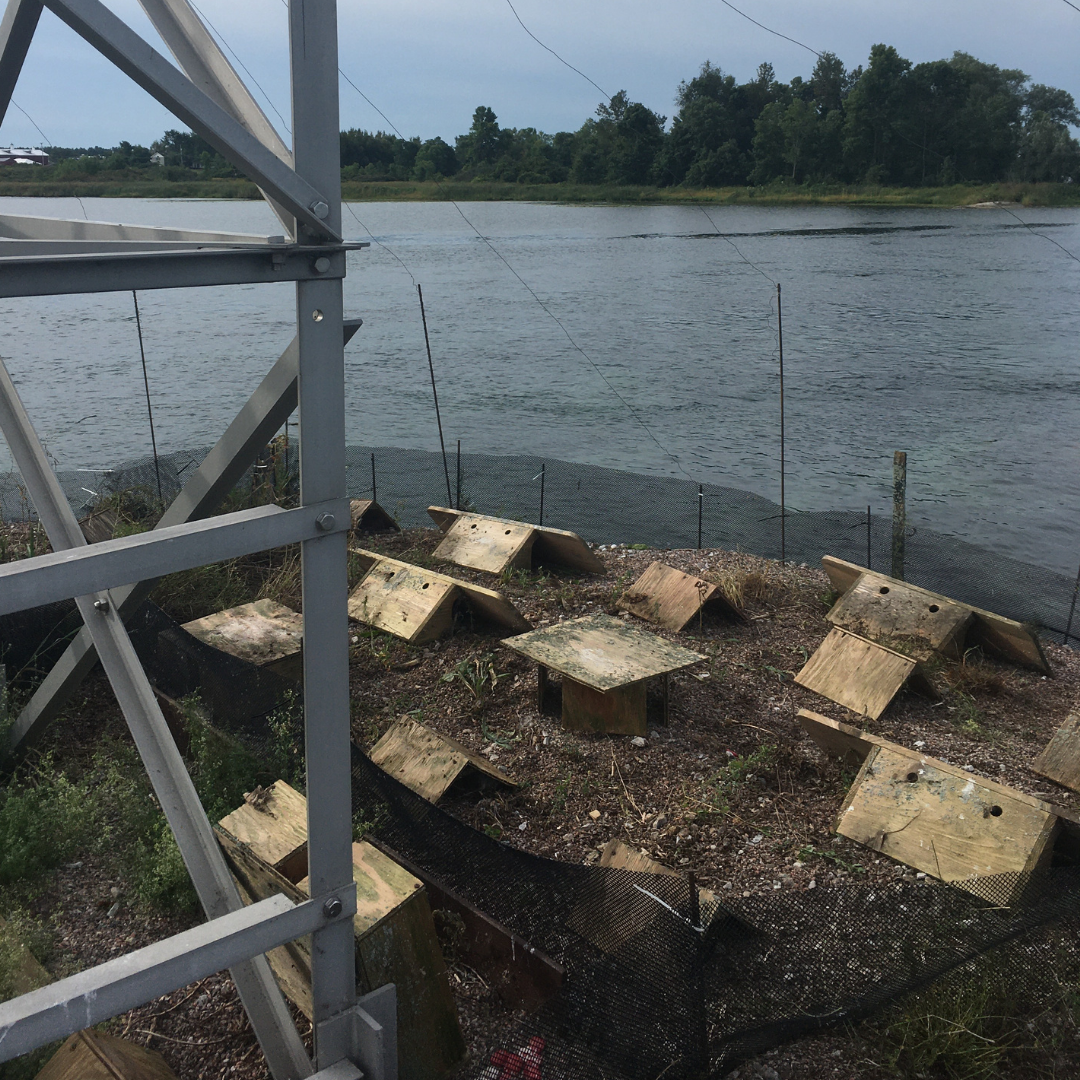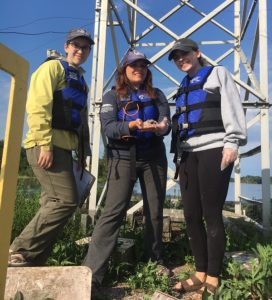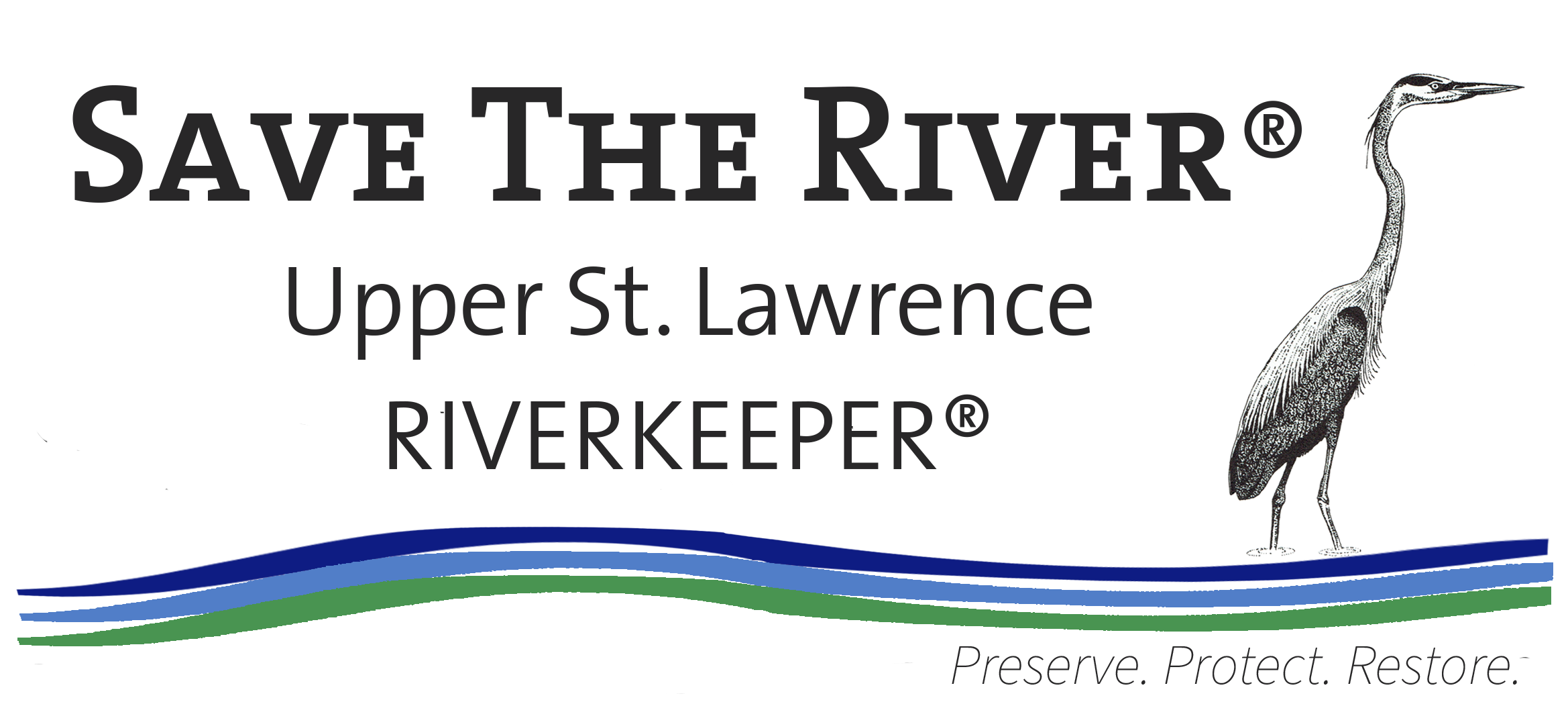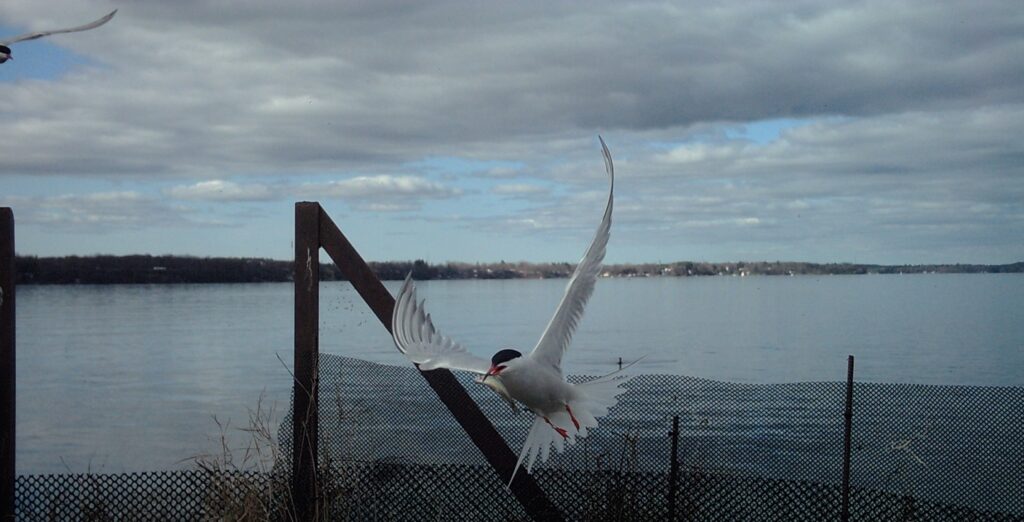Common Terns
Common Terns were once abundant throughout the St. Lawrence River Valley. However, populations of these graceful waterbirds with their distinctive call have dropped to dramatically low levels due to loss of nesting habitat. In fact, Common Terns are listed as a ‘threatened’ species in New York State.
The breeding adults have a light grey back, white underside, a white forked tail, and a glossy black cap and nape. The pointed wingtips are noticeably darker while the tail is shorter with darker edges. The slender, straight bill is bright red with a black tip. Their call is a harsh, rolling “kee-urr” sound.
Terns mostly feast on fish such as herring, haddock, and whiting. They have also be known to eat insects, crabs, shrimp, mollusks, worms, fish eggs, minnows, star fish, and other sea creatures.
Common Terns mostly live in colonies that can be found along ocean coasts, shores of large lakes, and nest on rocks and cliffs. These locations must be isolated from predators, have a reliable food source nearby, and allow them to communicate visually and vocally with the colony. Common Terns are the most widespread and abundant tern. They can be found from northern Canada to the Caribbean Sea and in Europe, Asia, North Africa and the Middle East.
Common Terns face high predation rates from red foxes, raccoons, striped skunks, minks, long-tailed weasels, squirrels, dogs, cats, rats, gulls, herons, hawks, falcons, owls, blue jays, grackles, and reptiles. Other threats include human disturbances and flooding and habitat loss due to storms and rising water levels.
It’s Hard to be a Tern
An award-winning short film by Vedette Productions
It took 30 years to restore the Tern Population to the St Lawrence River. Even though the numbers have more than doubled thanks to the Tern Restoration project the Common Tern is still listed as “Threatened” in New York State. In 2019, funding for the program is threatened and could end the efforts to save the Terns. This is the story of the Terns flight for survival.

Cornell’s NestWatch
Cornell’s NestWatch is a nationwide nest-monitoring program designed to track status and trends in the reproductive biology of birds. On their website, you can learn how to participate in different Citizen Science Programs (like Project Feederwatch or the Great Backyard Bird Count) or discover how to build birdhouses for your habitat!

Volunteer Monitoring Partnership
Thanks to restoration and monitoring programs, common tern populations are slowing growing on the River.

Each year, Save The River teams up with the Thousand Islands Land Trust, Dr. Lee Harper of the St. Lawrence Bird Observatory, and numerous volunteers to monitor Common Tern nesting grounds on the River.
Each summer, Save The River volunteers monitor adopted tern nesting areas along the River. Volunteer responsibilities include:
– Monitor colonies weekly
– Observe clutch size (number of eggs) and nestling survivorship
– Assist with habitat restoration projects
– Compile data for annual report
Data gathered is critical to scientists studying common tern populations and also guides habitat restoration efforts.
Interested in Volunteering?
To learn more about the program and to volunteer, call Save The River or e-mail info@savetheriver.org.

